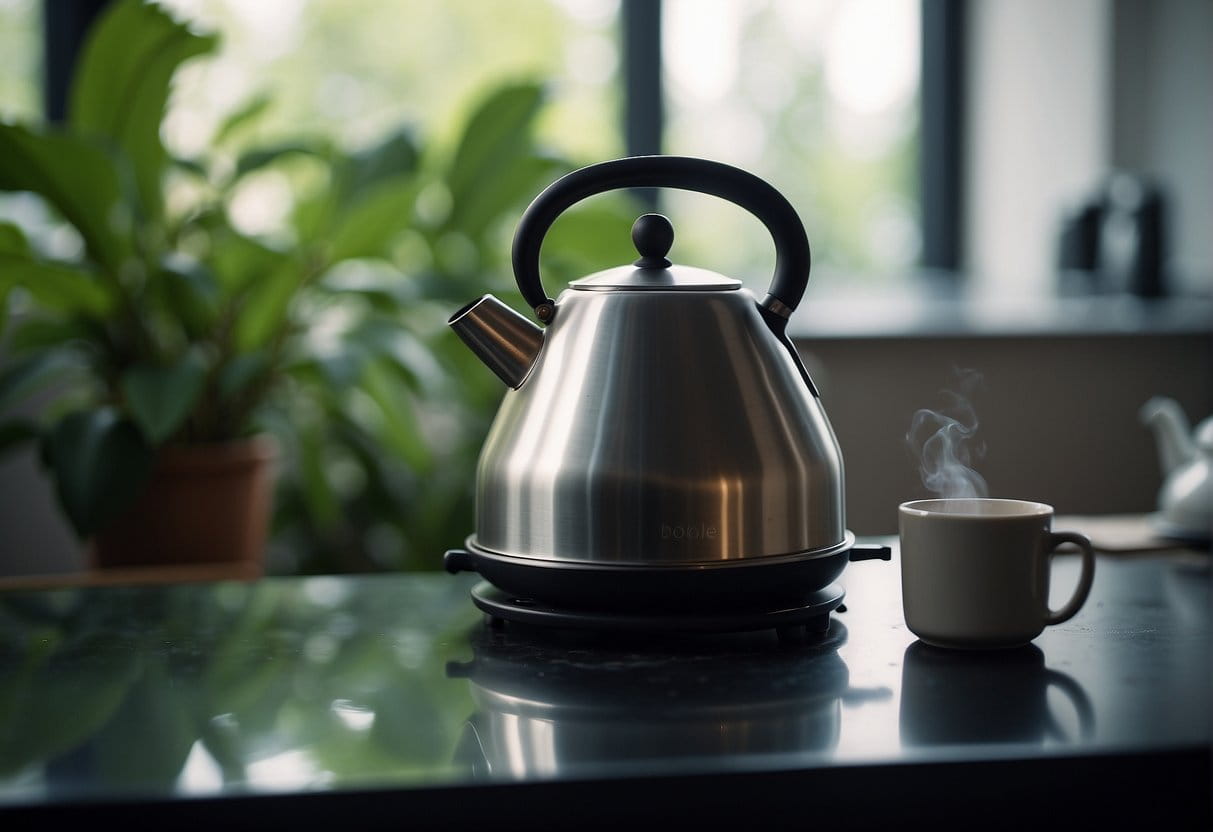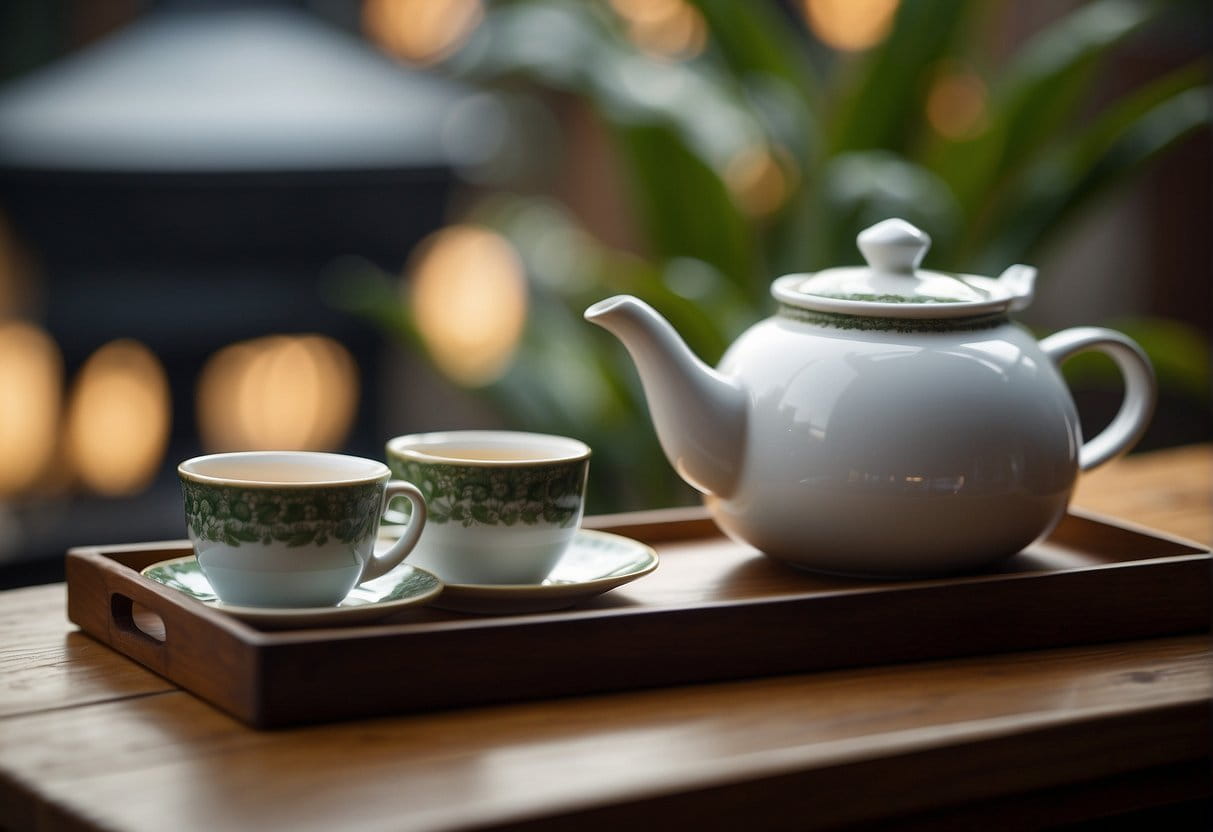How to Brew Oolong Tea
Oolong tea, a traditional Chinese tea, falls between green and black tea regarding oxidation. You'll find that it's partially oxidized, which confers a distinct flavor complexity ranging from floral to smoky.
Oxidation:
- Green Tea: 0-20%
- Oolong Tea: 20-80%
- Black Tea: 100%
While brewing, pay attention to the leaves. Whole-leaf oolongs often unfurl and expand significantly, offering multiple infusions from the same leaves. They are typically hand-rolled into various shapes, such as tight balls or long curly leaves.
Bestsellers
Regions: Notably produced in China, each region imparts its signature terroir to the tea.
| Main Producing Regions | Notable Varieties |
|---|---|
| Fujian, China | Tieguanyin |
| Guangdong, China | Dan Cong |
| Taiwan | Dong Ding |
The flavor of your oolong can vary widely:
- Light Oolong: A pale yellow liquor with delicate floral notes.
- Dark Oolong: A dark amber brew with richer, toasted flavors.
Follow these parameters for a standard brew:
- Water Temperature: 85°C to 95°C
- Steeping Time: 3-5 minutes
- Ratio: 1 teaspoon (2-3 grams) of oolong leaves per cup (240 ml) of water

Experiment with brewing times and leaf quantities to discover your preferred strength and flavor profile. Remember, high-quality oolong can be infused multiple times, with each infusion revealing a new layer of taste.
Essential Tools and Ingredients
To achieve the perfect brew of oolong tea, it's important to have the right tools and high-quality ingredients. Each aspect of the brewing process contributes to the final flavor and quality of your tea.
Teapot or Brewing Vessel
You'll need a teapot or brewing vessel designed for loose leaf tea. Ceramic or porcelain pots are preferred as they retain heat well and do not impart additional flavors to the tea.
-
Material: Choose a teapot made from materials such as:
- Ceramic
- Porcelain
- Glass
Oolong Tea Leaves
The tea leaves are the heart of your brew. Selecting high-grade oolong tea leaves is crucial for a rich and nuanced flavor profile.
-
Types to Consider:
- Classic oolong
- High mountain oolong
- Dark oolong
Water Quality and Temperature
The right water temperature extracts the perfect flavor from oolong tea leaves. Pure, filtered water is best for a clean taste.
-
Temperature Guide:
- Light oolongs: 185-195°F (85-90°C)
- Dark oolongs: 195-205°F (90-96°C)
- Water Quality: Filtered water recommended
Measuring Tools
Accurate measurements ensure the strength of your tea is consistent. Use measuring spoons for tea leaves and a thermometer to gauge water temperature.
-
Tools Needed:
- Measuring spoons
- Kitchen scale (optional for precision)
- Thermometer for water temperature
Preparation Process

Brewing oolong tea involves precise leaf measurement, careful water heating, a preliminary rinsing of the leaves, and the consideration of specific steeping parameters to ensure a perfect cup.
Lao Ban Zhang
Tea Leaf Measurement
For one cup (approximately 8 ounces) of oolong tea, measure out 1 to 1.5 teaspoons of loose tea leaves. Use a tea scale for more accuracy, aiming for about 3 grams of leaves.
Water Heating
Heat water to about 190°F to 200°F, which is just below boiling temperature. A kitchen thermometer can be used to check the water temperature. Avoid using boiling water as it may scorch the leaves, altering the taste.
Rinsing the Leaves
Pour the hot water over the tea leaves to rinse them briefly, and then immediately discard this water. This process, known as 'awakening' the leaves, helps remove any impurities and preheats the brewing vessel.
Steeping Parameters
Steep the tea leaves by pouring hot water over them again. Follow these guidelines for steeping times:
| Steep | Time |
|---|---|
| 1st | 1-2 minutes |
| 2nd | 2-3 minutes |
| 3rd | 3-5 minutes |
Adjust the steeping time according to taste preference. After steeping, remove the leaves to avoid over-brewing, which can result in a bitter flavor.
Steeping Techniques
Understanding the differences between steeping methods is crucial to achieving the desired flavor and strength of your oolong tea.
Traditional Chinese Method
For the Chinese gongfu method, the key is using a high leaf-to-water ratio in a small teapot or gaiwan.
- Preheat your vessel and cups with hot water.
- Add 5-8 grams of oolong tea per 100-150ml of water.
- Briefly rinse the leaves with hot water, then discard this water.
- Pour hot water (typically around 90°C to 95°C) over the leaves.
- Steep for a short time, usually starting around 30 seconds, increasing with each subsequent steep.
- You can usually re-steep the leaves multiple times, with up to 5-8 infusions or more.
Western Brewing Method
When using the Western method, the leaf-to-water ratio is more moderate, and steep times are longer.
- Use approximately 2 grams of tea per 8 ounces (about 240ml) of water.
- Heat water to just below boiling (around 90°C to 95°C).
- Pour water over the tea leaves in a larger teapot.
- Steep for 3 to 5 minutes, depending on desired strength.
- Typically, oolong tea leaves can be re-steeped 2-3 times using this method.
Serving and Enjoying

Properly serving and enjoying oolong tea enhances your experience by emphasizing its unique flavor profile. Use these techniques for the best tea tasting results.
Decanting the Brew
Once your oolong tea is perfectly steeped, it's crucial to decant it promptly to stop the brewing process. Pour the tea into each cup, ensuring an even distribution of the brew's strength. A fair cup, or a sharing pitcher, can be used to first collect the tea from all the brewing vessels before it's served into individual cups. This helps in maintaining a consistent flavor in each cup.
Tea Tasting Techniques
When tasting oolong tea, focus on the aroma, flavor, and aftertaste. Begin by smelling the brewed tea to pick up on the subtle scents - you might notice floral, fruity, or roasted notes. Sip the tea, let it roll across your tongue, and then swallow to appreciate the full flavor profile. Note how the taste changes from when you first sip to the lingering aftertaste.
Pairing with Food
Pairing oolong tea with the right food can elevate your tasting experience. Here's a simple guide:
- Light oolong teas: Pair these with sweet and subtle flavors like light pastries or seafood.
- Dark oolong teas: They go well with stronger flavors, such as grilled meats or spicy foods.
Remember, the goal is to complement the tea's flavor, not overpower it. Keep your bites small to ensure they do not interfere with your ability to taste the tea itself.
Cleaning and Maintenance
Proper cleanliness and maintenance of your teaware and tea storage are crucial for an optimal tea-brewing experience. Regularly cleaning your teaware prevents buildup of tea residue, while proper storage ensures your oolong tea maintains its flavor and freshness.
Teaware Cleaning
Clean your teaware immediately after use. Begin by rinsing the teapot with hot water to remove any loose tea leaves. Use a soft sponge or brush specifically designed for teaware to avoid scratching the surface. Avoid using soaps or detergents, as these can leave behind residues that may affect the taste of your tea. For teapots with tough stains or residue, prepare a mixture of baking soda and water to form a paste, apply it to the stains, and gently scrub. Rinse thoroughly with hot water after cleaning.
For the inside of spouts and hard-to-reach areas, use a cleaning brush intended for teapots. To clean tea stains from cups and pitchers, fill with a solution of one part vinegar to two parts hot water, let it soak for a few hours, then rinse with hot water.
Tea Storage
Store your oolong tea in an airtight container away from direct sunlight, moisture, and strong odors. Use materials like glass, tin, or ceramic with a tight-sealing lid.
| Material | Properties | Considerations |
|---|---|---|
| Glass | Non-reactive, airtight | Avoid clear glass; Use tinted to protect from light |
| Tin | Often airtight, lightproof | Ensure no rust; keep in cool, dry place |
| Ceramic | Good for maintaining freshness | Ensure lid fits tightly; keep away from heat sources |
Do not store your tea in the refrigerator or freezer as this can introduce moisture and cause the tea to degrade. Keep the storage container in a cool, dark place like a pantry or cupboard. Remember to label your tea with the date of purchase to help track freshness.
Frequently Asked Questions
When brewing oolong tea, precise techniques can enhance your experience. This section answers common questions to help you achieve the perfect cup.
What is the recommended water temperature for brewing oolong tea?
For oolong tea, a water temperature between 180°F and 200°F (82°C - 93°C) is ideal. This helps to extract a balanced flavor without scalding the leaves.
Which oolong tea to water ratio should I use for the ideal strength and flavor?
A general guideline is to use about 1 teaspoon (3 grams) of oolong tea leaves per 6 ounces (180 milliliters) of water. Adjust to your taste preference for a stronger or lighter brew.
What is the optimal steeping time for oolong tea to maximize its taste?
Typically, oolong tea should be steeped for 3 to 5 minutes. The steeping time can be increased or decreased depending on the desired intensity of flavor.
Can I add milk to oolong tea, and if so, how should I prepare it?
While oolong tea is traditionally enjoyed without milk, you can add a small amount of milk to create a richer beverage. Brew the tea stronger than usual to accommodate the dilution from the milk.
What are the best methods to brew oolong tea at home?
Using a teapot or a gaiwan is recommended for brewing oolong tea. Ensure the vessel is preheated before adding the tea leaves and water to fully appreciate the tea's aromatic profile.
Is it necessary to use a specific kind of vessel to brew oolong tea?
While not necessary, brewing oolong tea in a porcelain or clay teapot can enhance the flavor. These materials retain heat well and can contribute to a more nuanced tea experience.
← Older post Newer post →











